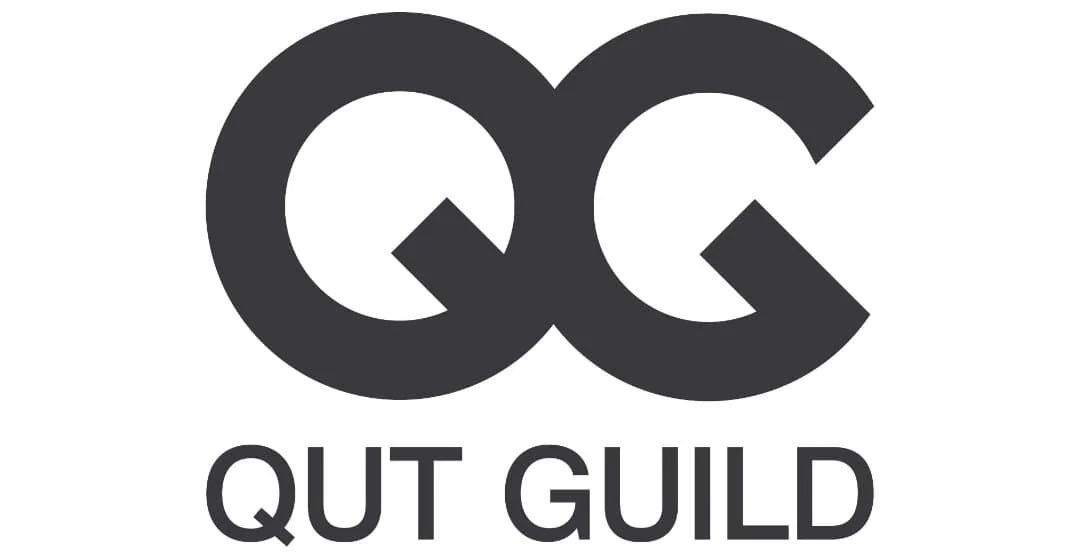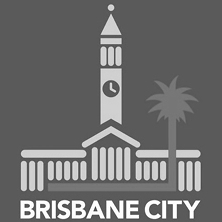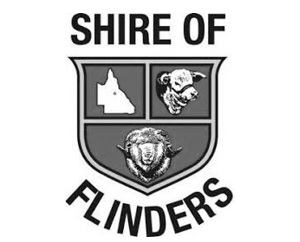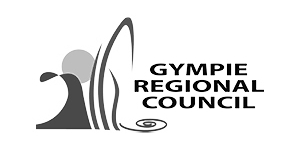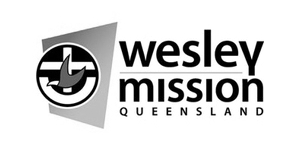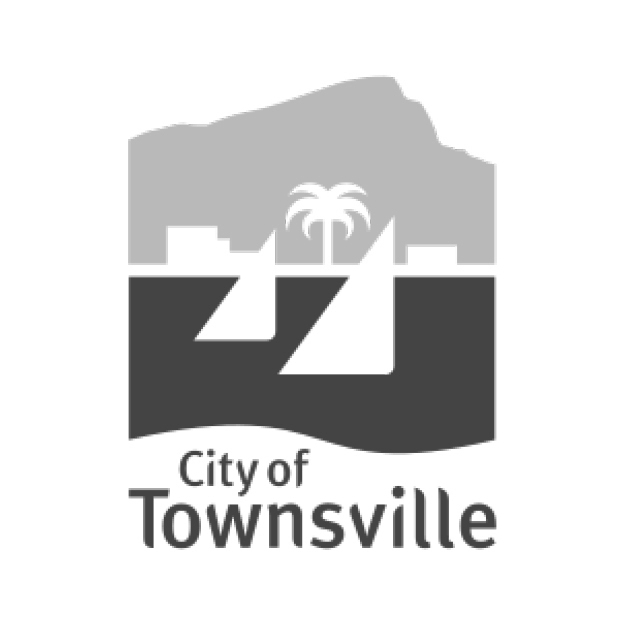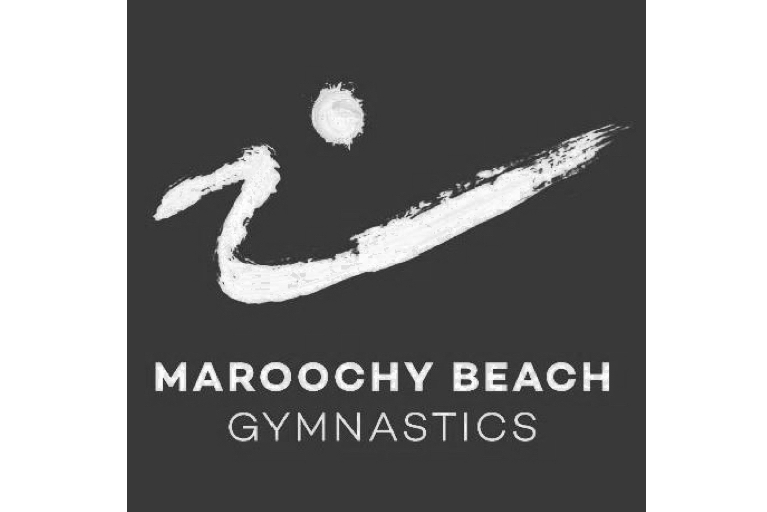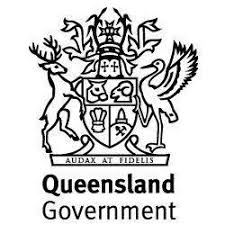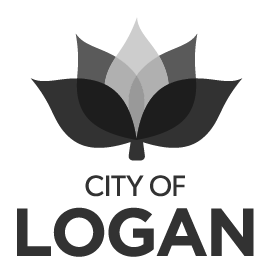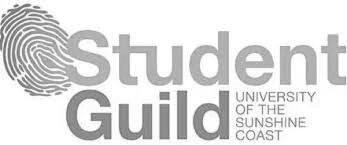For a club or association, bylaws can play an essential role in supplementing the rules contained in their constitution. They complement the broader principles in a constitution, focusing on the "how" rather than the "what". As such, having a clear set of bylaws is foundational to ensuring effective governance, good operations and positive member experiences. With our expertise, CPR Group can guide you through the bylaws process.
Is It Time to Evolve Grassroots Sport in Australia?
For generations, the federated model of community sport in Australia has shaped how clubs operate. From national bodies to state associations, zones, regions and finally down to clubs, the structure made sense when the secretary’s weekly visit to the local PO box was essential to relay information step-by-step through each layer. However, in today’s world of instant communication, where emails, tweets and posts connect us within seconds, it is my opinion that this model no longer serves its purpose efficiently.
Constitution Project Profile - Pioneer Valley Golf Club
A constitution isn't just a legal necessity in sporting clubs and not-for-profit organisations; it's the blueprint of effective governance and operational clarity. Recently, CPR Group collaborated with Pioneer Valley Golf Club Golf Club to update their constitution, setting them on a path to good governance practices.
During our engagement, we focussed on guiding and educating committee members through constitutional principles and their practical applications in daily operations. The end product, a tailored club constitution that incorporates best practice governance principles AND recent changes to the Associations Incorporation Act 1981! By deeply understanding the nuances of sports and not-for-profit environments, we empowered them to leverage their constitution to suit their identity.
Pioneer Valley Golf Club's experience underscores the importance of a robust constitution. "Our old constitution was actually a big handbrake, and very frustrating to work with. With 12 committee positions, there was no consensus on any subject being discussed. Affiliation and green fees being set by the members at the AGM was a total disaster. The continuity of committee members to run a club is essential for the club to be successful. I would not have lasted as President for 5 years if we had not updated our constitution."
Pioneer Valley Golf Club has since been able to utilise the newly registered constitution to navigate some potentially tricky situations regarding committee and staffing structures, as well membership communication. Their modern, up-to-date constitution and CPR Group's support allowed the club to handle the challenges with confidence and peace of mind that robust governance systems were in place.
Choosing CPR Group means partnering with a team that understands the intricate dynamics of sports clubs and not-for-profit organisations. We're dedicated to empowering your committee with practical solutions and strategic insights, ensuring your constitution becomes a proactive tool for success and a roadmap guiding your organisation's future.
Empowering Queensland’s Sports and Recreation Clubs with ClubIQ
A New Resource Hub for Volunteers
We are incredibly proud to announce the launch of ClubIQ – a comprehensive suite of resources and videos designed specifically for volunteers managing sports and recreation clubs in Queensland. This initiative, developed in collaboration with the Department of Tourism, Innovation and Sport (DTIS), marks the creation of a centralised hub of valuable and reliable information for clubs and associations throughout Queensland.
ClubIQ represents a unique opportunity to support community clubs and associations, helping them achieve greater levels of success and enjoyment for their members. This project is the culmination of over 25 years of experience working with clubs in Queensland. Our passion for sports governance and operations drives us to share our expertise with volunteers and staff, making a meaningful impact on the industry.
We understand the challenges faced by volunteers on club committees, especially with the high turnover rates that often leave new members without the necessary training, skills and knowledge. Our mission is to equip these dedicated individuals with the tools they need to succeed. The resources available on ClubIQ are straightforward and concise, focusing on the topics that matter most. We aim to simplify governance without requiring hours of reading, transforming complex ideas into accessible information.
"Clubs will be able to unlock a treasure trove of resources and training tailored to support volunteers, strengthen clubs, and enrich communities. From governance and planning to financial and volunteer management, there's something for everyone to boost club success. Join us as we kick off the movement and be part of a community dedicated to empowering volunteers and activating Queensland." - The Team @ Sport and Recreation
We extend our heartfelt thanks to the remarkable DTIS team and all the Queensland Sport and Recreation Officers. We have also thoroughly enjoyed the up-skilling governance training sessions over the last few months and trust these new skills and knowledge will benefit grassroots sports clubs and associations across our State.
At CPR Group, our goal is to ensure that every sport and recreation club and association has access to the knowledge, skills, and support they need to thrive, creating a legacy of strong and resilient clubs that will be enjoyed by generations to come.
Merging Perspectives in Community Sport - Tennis Dad to Sports Governance and Planning Mentor
By Michael Connelly - Managing Director at CPR Group and Tennis Dad
Navigating community sport from multiple vantage points offers many advantages and a multifaceted perspective. As the Managing Director of CPR Group, my professional journey intersects with sport and the not-for-profit sector, enabling collaborations with an array of stakeholders including governments, Councils, clubs, associations, universities and state and national governing bodies.
As a tennis Dad to my son Ethan, a self-driven athlete with support from sponsors like Lifetime Tennis, Wilson and Bidi Badu, that brings a personal dimension to my understanding of grassroots' sport. I have an advantage as a tennis Dad to understand perspectives from grassroots' clubs to competitive sport participation, whilst also being able to navigate the ups and downs of management committee responsibilities and challenges from over 26 years hands-on mentoring experience.
The Three-Sided View
My involvement spans three distinct realms - the governmental sphere across local, state and federal levels, the organisational domain from local clubs to national peak bodies and the personal realm as a parent supporting a young athlete. This comprehensive engagement provides deep insights into the operational, strategic and emotional layers of community sports.
The governmental angle emphasises the crucial role of policy, funding and infrastructure in nurturing grassroots sport, while my organisational involvement reveals the intricacies of club and association management, highlighting the necessity of robust governance and strategic foresight for sustainable sport growth at grassroots' level.
Being a hands-on tennis Dad for Ethan's sporting journey highlights the transformative power of community sport as a conduit for personal and athletic development. Enabling young people to be active in sport provides a sense of connectedness and sets goals beyond the classroom and their social environment. Whether participating at social or competitive level, sport allows young people to get away from digital technology and social media and target their focus and energy into healthier options whilst also encouraging new friendships away from school-life.
The Intrinsic Value of Community Sport
Community sport is a tapestry of passion, commitment and unity, offering more than just physical benefits. It's a setting where vital life skills are honed, friendships blossom and community ties strengthen. For young athletes like Ethan, it's a formative space for cultivating resilience, teamwork and leadership, reinforcing the sector's foundational role in our social fabric.
Community sport stands as a beacon of inclusivity and accessibility, inviting diverse participation and fostering a sense of collective achievement. This inclusive ethos enhances the sporting experience, creating a welcoming environment for all.
Bridging Perspectives for Enhanced Engagement
The dual lens of professional expertise and parental involvement across our CPR Group team enriches our contribution to community sport - it fosters a greater appreciation of member, volunteer and other stakeholder needs and preferences. This perspective facilitates a balanced approach when working in collaboration with management committees of sporting organisations, whether it is on their constitution, strategic plan or facility planning initiatives. The aim is to cultivate an environment where every participant, from budding athletes to dedicated volunteers, feels acknowledged and supported while also ensuring that sports facilities can meet the requirements of members and plan for future growth and success.
Through the lens of a sports governance and planning professional and a tennis parent, I've gained insights into the unifying potential of sport. As we navigate future challenges and celebrate collective achievements, the essence of community sport as a catalyst for inspiration, engagement and connection continues to guide our shared journey towards a more vibrant and connected society.
Why go beyond the ‘model rules’ for your not-for-profit organisation?
Upload your constitution for an initial assessment for compliance to current regulations. (*Eligible to Australian not-for-profit registered organisations only)
The foundation of any successful sporting club, or other not-for-profit (NFP) organisation, lies in its constitution. A constitution contains the governance rules of the club and serves as the guiding framework that outlines the organisation's objectives, structure, governance processes and member rights. While establishing a constitution is a crucial step for any NFP organisation, ensuring it remains up-to-date is equally essential. The model rules are available as a starting point but a tailored constitution has so many more advantages and it will serve your organisation well.
Here's why every sporting club in Australia should prioritise maintaining an up-to-date constitution and one that is adapted to suit your unique requirements…
An up-to-date constitution ensures that your NFP complies with relevant laws, regulations and industry standards. Australian laws governing sporting organisations and other NFPs are subject to change and an outdated constitution may lead to legal complications or non-compliance issues. By regularly reviewing and updating your constitution, you can minimise legal risks and operate with more peace of mind.
Whether it's revising membership criteria, updating voting procedures, or incorporating new governance practices, a flexible constitution enables your organisation to evolve and remain relevant in a dynamic environment.
Disputes and conflicts may arise within your organisation due to misunderstandings, diverging interests or governance issues. An up-to-date and tailored constitution provides a structured framework for resolving conflicts and addressing grievances. It outlines procedures for dispute resolution, disciplinary actions and member appeals, facilitating fair and equitable outcomes. By adhering to the constitution's guidelines, clubs can mitigate conflicts and maintain harmony within the organisation.
An up-to-date constitution enables clubs to adapt their governance structures, membership policies, and operational procedures to support strategic objectives and facilitate sustainable growth. A highly-functioning constitution reflects your commitment to transparency, accountability and good governance practices while enhancing your organisation’s reputation and credibility within your community. This can all lead to attracting quality sponsors, supporters and talented athletes. A tailored constitution signals to external stakeholders that the club operates with integrity and is committed to upholding high standards of professionalism.
Maintaining an up-to-date and personalised constitution is essential for the long-term success and sustainability of your not-for-profit organisation.
Important Note: New grievance procedures take effect for Queensland Incorporated Associations on 1 July 2024. Contact CPR Group’s governance team for further details.
The Role of Community Leasing in Local Government
The Role of Community Leasing in Local Government
In the heart of every thriving community lies a complex web of interactions, relationships and structures that define its very essence. Among these, community leasing stands out, especially within the realm of local government. It's a domain where Councils play a pivotal role, not just as regulators, but as enablers of community, sport and recreation organisations that breathe life into our cities and towns.
The Landscape of Community Leasing
Across Councils, the sheer number of facilities leased to community groups is staggering. These range from quaint community halls, to premier sporting venues, embodying each Council's commitment to local engagement and empowerment. However, managing such vast portfolios is no small feat. It involves a broad spectrum of Council departments, from property management and legal to finance and customer services. Each plays a crucial role in ensuring the smooth operation of community leases, highlighting the necessity for clear, transparent communication and robust systems that transcend individual capabilities.
Breaking Down Silos for Holistic Management
The complexity of community leasing demands an integrated approach. Maintenance responsibilities, for instance, are often split between Councils and tenant organisations, requiring meticulous coordination to ensure facilities meet community standards. Additionally, the involvement of legal teams in document registration and dispute resolution and finance departments in billing and rate management, alongside teams that manage data integrity and privacy, highlights the interdisciplinary nature of community leasing. This interconnectedness calls for a dismantling of departmental silos, advocating for a cohesive strategy that ensures seamless operations across the board.
Navigating Fee Structures and Council Philosophies
At the heart of community leasing lies a Council's ‘philosophy’ towards cost recovery and community service. While some Councils lean further towards cost recovery to maximise resource utilisation, others adopt a more subsidised approach, recognising the intrinsic value community organisations bring to local life. This delicate balance between financial sustainability and community support is crucial, necessitating policies that reflect contemporary needs without compromising on service quality.
Exploring Diverse Tenure Arrangements
While leasing is a pivotal aspect of community tenure, there is a broad spectrum of arrangements that can meet the diverse needs of community organisations and the use of public spaces. Beyond traditional leases, Councils often employ tenure models that best suit the function and governance of different facilities. The issuing of community leases can be balanced with Right of Use or Permit to Occupy agreements (e.g. over sports fields and spaces), Management Agreements (e.g. where community organisations oversee entire community centres on behalf of Council), subleasing arrangements that extend the flexibility within existing leased areas and seasonal and short-term bookings that enable effective facility sharing. Varied tenure types can help reflect each Council's adaptive approach to community engagement, ensuring that public spaces are accessible, efficiently managed and aligned with community needs.
The Imperative of Facility Sharing
As communities continue to grow and green spaces become increasingly scarce, the necessity for facility sharing among community groups and sports clubs becomes ever more pressing. Despite some resistance from organisations accustomed to exclusive use, the reality of limited community facilities dictates a shift towards shared use as a sustainable model for community engagement. Facility sharing optimises the use of available spaces as well as encouraging collaboration among community groups, fostering an inclusive and dynamic community environment. It is a pragmatic response to the challenges of urban development, ensuring that limited resources are used in a manner that benefits the broadest cross-section of the community. Councils and community organisations alike must embrace the concept of shared facilities, recognising it as a necessary evolution in the management of public spaces to accommodate the diverse and growing needs of our communities.
The Political Dimension
Of course, we must acknowledge the political nuances that influence Council decisions. Local government is, by nature, a politically charged environment where Mayors and Councillors wield significant influence. Ensuring robust systems and processes that can withstand political pressures is essential, safeguarding public resources from being swayed by individual interests.
Legislative Complexities and Continuous Education
Community leasing is governed by a myriad of legislative frameworks and policies, from state and territory land legislation to safety and risk management protocols. This legislative labyrinth, coupled with the high turnover of volunteers in community organisations, underscores the need for ongoing education. Councils must provide continuous support to these organisations, guiding them through governance challenges and lease management intricacies.
Balancing Decision-Making Principles
When navigating the complexities of community leasing, Councils are tasked with the delicate balancing act of aligning various guiding principles to ensure decisions are equitable, effective and sustainable. Before building a new community tenure framework, the various departments affected should agree on a set of principles to serve as a compass, guiding the Council through the intricate landscape of community leasing to ensure that their strategies meet current needs and are resilient enough to adapt to future challenges.
The guiding principles chosen in the development of a successful community leasing framework may touch on:
Risk management - the safety and security of community facilities and those that use them
Equity or fairness - evaluating leases and calculating fees in a way that ensures that community organisations have equitable access to facilities, regardless of their size, recognising that the community benefit added by a tiny charity may dwarf that of the area’s largest sports club
Strategic alignment - echoing the broader strategic objectives of Council and community organisations
Resource optimisation - maximising the use of community facilities while minimising waste
Simplicity and transparency - providing a clear, organised tenure structure that is easily navigable by community organisations and Council teams
Sustainability - addressing environmental stewardship and ongoing financial viability for both lessees and Councils
Flexibility - a system that can evolve with changing demands and occupancy arrangements
Councils must recognise that these principles can sometimes conflict with one another. For instance, the pursuit of equity might complicate the simplicity of processes, or the drive for financial viability could potentially impact the affordability of access for some community groups. The key lies in finding an equilibrium that respects the unique context and needs of each community.
Encouraging Entrepreneurial Spirit within Community Organisations
The evolution of community needs demands that Councils adopt a forward-thinking approach to community leasing policies. The traditional model, which may restrict clubs from engaging in profitable and entrepreneurial activities, needs reevaluation. Modern policies should enable community NFPs to thrive, allowing them to sublease facilities for commercial ventures that contribute to their sustainability and the vibrancy of community life.
Towards a Contemporary Framework
The journey towards a contemporary community leasing framework is not merely about change for change's sake. It's a strategic shift aimed at enhancing service delivery, fostering community engagement and ensuring the sustainable operation of community, sport and recreation clubs. This evolution is crucial in maintaining the dynamism and resilience of our communities, ensuring they remain vibrant and inclusive spaces for all.
Michael Connelly has spearheaded more community tenure strategy evaluations and modernisations on behalf of CPR Group than he has guitars in his ever-growing collection. Known for his knack for harmonising complex community leasing frameworks, Michael leads the charge in assisting local governments to fine-tune their community engagement strategies. Michael brings excitement and precision to navigating the intricate landscapes of community leasing. CPR Group has become synonymous with crafting effective, equitable policies that resonate with Councils and strike a chord with community organisations, contributing to vibrant, inclusive communities.
Why Succession Planning is not Happening in Your Organisation
Succession planning, an important aspect of long-term stability, has proven challenging for several local organisations within your LGA. Key hindrances span from members' uncertainties about leadership responsibilities to the perception that current leaders are unparalleled, compounded by the knowledge void created upon their departure. Moreover, stringent regulatory demands often divert attention from crucial long-term goals. However, by integrating succession measures into routine strategic discussions, championing the transfer of knowledge through mentorship programs and understanding succession as an ongoing commitment, we can ensure fluid leadership transitions and fortify our local organisations' futures. Let's collaborate to build a resilient LGA community together.
Optimising Volunteers and Staff for Enhanced Engagement in Sports Clubs and Community Organisations
Within every organisation, the ultimate aim is to cultivate a team of happy and engaged volunteers who selflessly dedicate their time and expertise to support the community. Yet, what precisely characterises a fulfilled volunteer? How can we establish an environment that nurtures joy and fulfilment among our volunteers? This article embarks on a journey to unravel these questions, offering valuable insights into volunteer management specifically tailored for Australian volunteers engaged in sports clubs and community organisations.
The Pillars of Good Governance: Insights from a CPR Group Recent Poll
Effective functioning of any organisation, such as a sporting club, charity or community group, hinges on the presence of good governance. It encompasses transparency, accountability, and the adoption of sound policies that yield benefits for all stakeholders. Recognising the importance of this topic, CPR Group conducted a poll to discern the most crucial elements of good governance, as perceived by our clients. The obtained results offer valuable insights, shedding light on the fundamental pillars of successful governance. In this article, we analyse the poll findings and explore the significance of each identified aspect.
Why is Strategic Planning Difficult for Clubs and Organisations?
As grassroots club volunteers, you might have come across numerous templates for club strategic plans online, many of which lack that personal touch and excitement. Let’s explore why strategic planning can be difficult for clubs, while also highlighting how the process can be enjoyable and engaging.
Defining The Rules of The Game – tenure policies for shared facilities
Board Induction Training for Club Management Committee and Board Members
As a volunteer for a sports club or community organisation in Australia, you play a crucial role in the success of your group. You invest your time, effort and skills to help your community thrive. However, being a volunteer can also be challenging, especially if you're new to the role. That's where a board induction training session can make all the difference.
Club governance tip: ‘Not-for-profit’ doesn’t mean you can’t make money
Club governance tip: ‘Don’t shoot the messenger’ has an ugly cousin
Shooting the messenger feels good, because it gives us a chance to vent when we receive bad news, even though we know it isn’t helpful. But have you also noticed that people have a tendency to ignore advice from people they don’t like, even if the advice is sound? This article is a reminder about the need for club leaders to have great listening skills and to keep an open mind to all suggestions, regardless of where they come from.
Club planning tip: Losses loom large - Why clubs are afraid of change
Are there things you do in your club that haven’t changed in more than 10 years? In that time, how has the world around you changed? In this article, Michael Connelly explores how people’s natural fear of losing what they have can be holding clubs back from making sensible changes that can lead to better growth and prosperity.
The Top 5 things to look for when choosing someone to write your new constitution
Your constitution really is important. Not only does it cover vital things like your name, why you exist and how you need to hold meetings, it’s the document that keeps you incorporated! If it isn’t up to date, it can cause stress and sleepless nights leading up to events like your AGM. If you don’t feel comfortable trying to write your new constitution on your own, it’s a good idea to get professional help, to make sure you get it right. But how do you find the best professional to write your new constitution? Because it’s not something you do every day, this article provides the top 5 things to consider when looking for the best club constitution writer.
6 Myths About Club Governance Training
The most successful community groups, clubs and charity organisations know the value of engaging external professionals to deliver governance training for their committees and boards. They know that the investment of time and money they make will lead to more efficient operations, and therefore better community outcomes. So why do many smaller organisations still shy away from buying club governance training? In this article, we bust what we think are the 6 biggest myths that are standing in the way of volunteers investing in their own learning and growth.
Risk Management Within Australian Clubs - Good Governance
Australian clubs, associations and organisations experience a wide array of risks throughout the year. These risks include everything from natural disasters through to losing volunteers. However, over the last few years we have seen a rise of another kind of risk that could result in committee members being liable if they turn a blind eye to the problem. Management committee and board members need to be aware of common mistakes, such as outdated constitutions, policies, or an expired strategic plan, and avoid them to protect their clubs, organisations and members as much as possible.






















